- Home
- Mary Higgins Clark
Manhattan Mayhem: New Crime Stories From Mystery Writers of America
Manhattan Mayhem: New Crime Stories From Mystery Writers of America Read online
Volume copyright © 2015 by Mystery Writers of America, Inc.
Introduction copyright © 2015 by Mary Higgins Clark
“The Five-Dollar Dress” copyright © 2015 by Mary Higgins Clark
“White Rabbit” copyright © 2015 by Julie Hyzy
“The Picture of the Lonely Diner” copyright © 2015 by Lee Child
“Three Little Words” copyright © 2015 by Nancy Pickard
“Damage Control” copyright © 2015 by Thomas H. Cook
“The Day after Victory” copyright © 2015 by Brendan DuBois
“Serial Benefactor” copyright © 2015 by Jon L. Breen
“Trapped!” copyright © 2015 by Ben H. Winters
“Wall Street Rodeo” copyright © 2015 by Angela Zeman
“Copycats” copyright © 2015 by N. J. Ayres
“Red-Headed Stepchild” copyright © 2015 by Margaret Maron
“Sutton Death Overtime” copyright © 2015 by Judith Kelman
“Dizzy and Gillespie” copyright © 2015 by Persia Walker
“Me and Mikey” copyright © 2015 by T. Jefferson Parker
“Evermore” copyright © 2015 by Justin Scott
“Chin Yong-Yun Makes a Shiddach” copyright © 2015 by S. J. Rozan
“The Baker of Bleecker Street” copyright © 2015 by Jeffery Deaver
All rights reserved. No part of this book may be reproduced in any form without written permission from the publisher.
All photographs © the photographer as follows: jacket, CSchel, courtesy Gettyimages.com/thinkstock; 1.1, Roman Kruglov; 1.2, Thomas Hawk; 1.3, Paul Stocker; 1.4, Angelo Amboldi; 1.5, Janine and Jim Eden; 1.6, The All-Nite Images; 1.7, Felinebird; 1.8, Jeffrey Zeldman; 1.9, Diego Torres Silvestre; 1.10, Dayna Bateman; Lt. Victor Jorgensen (U.S. Navy), courtesy National Archives, College Park, MD; 1.11, Superstock, courtesy Getty Images; 1.12, Tony Evans; 1.13, Scott Beale; 1.14, Eric Parker; 1.15, Pikadilly; 1.16, Phillip Kalantzis Cope; 1.17, Francis Raymond; 1.18 and 1.19, Jeffrey Zeldman; 1.20, © Michael S. Yamashita/Corbis; 1.21, Axel Taferner; 1.22, Hans Elbl; 1.23, A. Strakey; 1.24, Chris Goldberg; 1.25, Shawn Hoke; 1.26, © Bettmann/Corbis; 1.27, Eric Allix Rogers
Library of Congress Cataloging in Publication Number: 2014938241
ISBN: 978-1-59474-761-8
eBook ISBN: 978-1-59474-781-6
Designed by Timothy O’Donnell
Production management by John J. McGurk
Quirk Books
215 Church Street
Philadelphia, PA 19106
quirkbooks.com
v3.1
· TABLE OF CONTENTS ·
Cover
Title Page
Copyright
INTRODUCTION
Mary Higgins Clark
THE FIVE-DOLLAR DRESS
Mary Higgins Clark in Union Square
WHITE RABBIT
Julie Hyzy in Central Park
THE PICTURE OF THE LONELY DINER
Lee Child in the Flatiron District
THREE LITTLE WORDS
Nancy Pickard on the Upper West Side
DAMAGE CONTROL
Thomas H. Cook in Hell’s Kitchen
THE DAY AFTER VICTORY
Brendan DuBois in Times Square
SERIAL BENEFACTOR
Jon L. Breen in the Empire State Building
TRAPPED!
Ben H. Winters in Chelsea
WALL STREET RODEO
Angela Zeman on Wall Street
COPYCATS
N. J. Ayres in Alphabet City
RED-HEADED STEPCHILD
Margaret Maron on the Upper East Side
SUTTON DEATH OVERTIME
Judith Kelman on Sutton Place
DIZZY AND GILLESPIE
Persia Walker in Harlem
ME AND MIKEY
T. Jefferson Parker in Little Italy
EVERMORE
Justin Scott on the Hudson River
CHIN YONG-YUN MAKES A SHIDDACH
S. J. Rozan in Chinatown
THE BAKER OF BLEECKER STREET
Jeffery Deaver in Greenwich Village
INTRODUCTION
Mary Higgins Clark
In 2015, Mystery Writers of America celebrated its founding seventy years ago, in March 1945, during the closing days of World War II. The founding group consisted of ten women and men, eventually gaining membership to about one hundred by the end of its first year. I remember when I joined MWA over fifty years ago, only about ten tables were needed at the annual Edgar Awards banquet, a much more intimate affair than today’s glittery gala.
Back then, the joke we told was about the man who went to a cocktail party and was asked by another guest what kind of job he had.
“I’m a writer,” he said.
“Oh, that’s wonderful. What do you write?”
“Crime novels.”
Pause. Icy stare. Then the put-down. “I only read good books.”
That was then, this is now. Today, suspense and crime novels, “thrillers” as the English call them, have taken their place worldwide as an honored and thoroughly enjoyed branch of literature. And MWA has grown right alongside the genre. From its humble beginnings, when those ten authors met in Manhattan to form what would become today’s MWA, our venerable organization has grown to more than 3,500 members around the world.
The seventieth anniversary of Mystery Writers of America is a very special occasion. Since its founding, the organization has worked tirelessly to protect and promote mystery and crime writers, working in conjunction with them, as well as with publishers and libraries, to elevate both the genre and its authors. And that is why our tireless former executive vice president and current publication committee chair, Barry Zeman, and I conceived the idea of a special anniversary tribute collection celebrating Manhattan, where MWA was conceived and created.
Manhattan Mayhem is my third MWA anthology, and although I am proud of each one, this one holds a unique place in my heart. I invited a stellar collection of authors, including those who had previously given their time and talents to my past anthologies and are still active in MWA, as well as writers I have not had the pleasure of working with until now. Each was asked to select an iconic Manhattan neighborhood in which to set a story. The result is a marvelously diverse collection of tales that takes place from one end of the borough to the other—from Wall Street to Union Square, Central Park to Harlem, and Times Square to Sutton Place South, as well as eleven other evocative New York City locations.
Some writers decided to visit the Manhattan of the past, such as N. J. Ayres in “Copycats,” a gritty tale of post–World War II cops and criminals, and “The Baker of Bleecker Street,” Jeffery Deaver’s tale of wartime espionage. In “The Day after Victory,” Brendan DuBois chose to write about a pivotal moment in the city’s history, V-J Day in Times Square. Angela Zeman selected a different era, the bustling early 1990s, for “Wall Street Rodeo,” a story of street hustlers and cons-within-cons that plays out on the street hailed as the financial capital of the world.
Other authors spun stories that encompass many years and, often, decades. Jon L. Breen tells of a series of unsolved crimes that reach back more than half a century in “Serial Benefactor.” T. Jefferson Parker takes us on a tour of the darker side of Little Italy’s crime families from the 1970s to today in “Me and Mikey.” Judith Kelman’s “Sutton Death Overtime” combines the perils and pitfalls of mystery-novel writing and the disappearance of a Manhattan socialite whose case is laid to rest decades later … or is it? Native Manhattanite Justin Scott weaves one of our most fanciful tal
es, crossing crime, time, and space to spectacular effect in “Evermore.” I also offer a story of my own. “The Five-Dollar Dress” is a cautionary tale about how we may never truly know those closest to our hearts.
But of course, even today, Manhattan is a hotbed of imagined crimes and mystery as well as the real thing. For some of our stories, family is at the heart of a crime. In “Three Little Words,” Nancy Pickard reveals the often-spiteful core of the Big Apple and what happens when one woman tries to change it. The mystery-solving mother of series detective Lydia Chin tackles a missing-persons case brought to her by her son in S. J. Rozan’s “Chin Yong-Yun Makes a Shiddach,” while in “Red-Headed Stepchild” fellow MWA grand master Margaret Maron shows a step-sibling rivalry that matches anything adults can dream up. Thomas H. Cook portrays how some family ties can bind to the bitter end in “Damage Control,” set in a gentrified Hell’s Kitchen, and Persia Walker’s “Dizzy and Gillespie” tells of a dispute between neighbors in a Harlem apartment building, with a loving daughter caught in the middle.
All these wonderful stories, and we’ve barely scratched the surface. Lee Child’s drifting modern warrior Jack Reacher makes a stop in the Big Apple in “The Picture of the Lonely Diner,” in which just exiting a subway station ensnares him in enough intrigue and danger to fill a novel. A sunny day in Central Park turns dangerous for at least one perpetrator in Julie Hyzy’s “White Rabbit.” And Ben H. Winters takes us behind the cutthroat world of Off-Broadway theater in “Trapped!”
Our esteemed publisher, Quirk Books, has illustrated each of the stories with maps and photographs from these classic neighborhoods, making Manhattan Mayhem a unique tribute and keepsake anthology in honor of a very special organization and an equally special city.
We hope you’ll be as pleased reading these stories as we were writing them.
ON THE OCCASION of MWA’s seventieth anniversary, we would like to take a moment on behalf of the organization to extend our deepest appreciation to Mary Higgins Clark. Since joining its ranks as a young writer, she has consistently been a tireless champion of MWA, our members, and mystery writers worldwide.
Mary is always ready to lend a helping hand in our endeavors. In addition to many tasks performed on behalf of MWA during her more than ten years as a member of the National Board of Directors, as MWA’s national president she served as an indefatigable and peerless leader and spokeswoman for our genre. Mary also took on a small job that lasted for two years, organizing and chairing the 1988 International Crime Congress, a stellar weeklong affair hosting mystery and crime writers from all over the world.
If that were not enough for one individual to give of her time and talent, Mary has also edited three annual MWA anthologies and contributed to many more.
She is a talented and beloved writer, and her outstanding contribution to the genre was duly recognized when she was named MWA Grand Master for her outstanding body of consistently high-quality work produced over her storied career.
Much has changed since Mary first joined our ranks, but she, thankfully, has remained the same gracious, warm, and caring person she has always been, and we are all richer for knowing her. Certainly recognized worldwide as “The Queen of Suspense,” around here she is known as “The Queen of Our Hearts.”
We offer our deepest and most sincere thanks for Mary’s many years of selfless service to Mystery Writers of America and writers everywhere. We hope there are many more to come.
BARRY T. ZEMAN
Chair, Publications Committee
TED HERTZEL, JR.
Executive Vice President
THE FIVE-DOLLAR DRESS
Mary Higgins Clark
It was a late August afternoon, and the sun was sending slanting shadows across Union Square in Manhattan. It’s a peculiar kind of day, Jenny thought as she came up from the subway and turned east. This was the last day she needed to go to the apartment of her grandmother, who had died three weeks ago.
She had already cleaned out most of the apartment. The furniture and all of Gran’s household goods, as well as her clothing, would be picked up at five o’clock by the diocese charity.
Her mother and father were both pediatricians in San Francisco and had intensely busy schedules. Having just passed the bar exam after graduating from Stanford Law School, Jenny was free to do the job. Next week, she would be starting as a deputy district attorney in San Francisco.
At First Avenue, she looked up while waiting for the light to change. She could see the windows of her grandmother’s apartment on the fourth floor of 415 East Fourteenth Street. Gran had been one of the first tenants to move there in 1949. She and my grandfather moved to New Jersey when Mom was five, Jennie thought, but she moved back after my grandfather died. That was twenty years ago.
Filled with memories of the grandmother she had adored, Jenny didn’t notice when the light turned green. It’s almost as though I’m seeing her in the window, watching for me the way she did when I’d visit her, she reminisced. An impatient pedestrian brushed against her shoulder as he walked around her, and she realized the light was turning green again. She crossed the street and walked the short distance to the entrance of Gran’s building. There, with increasingly reluctant steps, she entered the security code, opened the door, walked to the elevator, got in, and pushed the button.
On the fourth floor, she got off the elevator and slowly walked down the corridor to her grandmother’s apartment. Tears came to her eyes as she thought of the countless times her grandmother had been waiting with the door open after having seen her cross the street. Swallowing the lump in her throat, Jenny turned the key in the lock and opened the door. She reminded herself that, at eighty-six, Gran had been ready to go. She had said that twenty years was a long time without her grandfather, and she wanted to be with him.
And she had started to drift into dementia, talking about someone named Sarah … how Barney didn’t kill her … Vincent did … that someday she’d prove it.
If there’s anything Gran wouldn’t have wanted to live with, it’s dementia, Jenny thought. Taking a deep breath, she looked around the room. The boxes she had packed were clustered together. The bookshelves were bare. The tabletops were empty. Yesterday she had wrapped and packed the Royal Doulton figurines that her grandmother had loved, and the framed family pictures that would be sent to California.
She only had one job left. It was to go through her grandmother’s hope chest to see if there was anything else to keep.
The hope chest was special. She started to walk down the hallway to the small bedroom that Gran had turned into a den. Even though she had a sweater on, she felt chilled. She wondered if all apartments or homes felt like this after the person who had lived in them was gone.
Entering the room, she sat on the convertible couch that had been her bed there ever since she was eleven years old. That was the first time she had been allowed to fly alone from California and spend a month of the summer with her grandmother.
Jenny remembered how her grandmother used to open the chest and always take out a present for her whenever she was visiting. But she had never allowed her granddaughter to rummage through it. “There are some things I don’t want to share, Jenny,” she had said. “Maybe someday I’ll let you look at them. Or a maybe I’ll get rid of them. I don’t know yet.”
I wonder if Gran ever did get rid of whatever it was that was so secret? Jenny asked herself.
The hope chest now served as a coffee table in the den.
She sat on the couch, took a deep breath, and lifted the lid. She soon realized that most of the hope chest was filled with heavy blankets and quilts, the kind that had long since been replaced by lighter comforters.
Why did Gran keep all this stuff? Jenny wondered. Struggling to take the blankets out, she then stacked them into a discard pile on the floor. Maybe someone can use them, she decided. They do look warm.
Next were three linen tablecloth and napkin sets, the kind her grandmother had always joked about
. “Almost nobody bothers with linen tablecloths and napkins anymore, unless it’s Thanksgiving or Christmas,” she had said. “It’s a wash-and-dry world.”
When I get married, Gran, I’ll use them in your memory on Thanksgiving and Christmas and special occasions, Jenny promised.
She was almost to the bottom of the trunk. A wedding album with a white leather cover, inscribed with Our Wedding Day in gold lettering, was the next item. Jenny opened it. The pictures were in black and white. The first one was of her grandmother in her wedding gown arriving at the church. Jennie gasped. Gran showed this to me years ago, but I never realized how much I would grow to look like her. They had the same high cheekbones, the same dark hair, the same features. It’s like looking in a mirror, she thought.
She remembered that when Gran had shown her the album, she’d pointed out the people in it. “That was your father’s best friend … That was my maid of honor, your great-aunt … And doesn’t your grandfather look handsome? You were only five when he died, so of course you have no memory of him.”
I do have some vague memories of him, Jenny thought. He would hug me and give me a big kiss and then recite a couple lines of a poem about someone named Jenny. I’ll have to look it up someday.
There was a loose photograph after the last bound picture in the album. It was of her grandmother and another young woman wearing identical cocktail dresses. Oh, how lovely, Jenny thought. The dresses had a graceful boat neckline, long sleeves, a narrow waist, and a bouffant ankle-length skirt.
Prettier than anything on the market today, she thought.
She turned over the picture and read the typed note attached to it:
Sarah wore this dress in the fashion show at Klein’s only hours before she was murdered in it. I’m wearing the other one. It was a backup in case the original became damaged. The designer, Vincent Cole, called it “The Five-Dollar Dress,” because that’s what they were going to charge for it. He said he would lose money on it, but that dress would make his name. It made a big hit at the show, and the buyer ordered thirty, but Cole wouldn’t sell any after Sarah was found in it. He wanted me to return the sample he had given me, but I refused. I think the reason he wanted to get rid of the dress was because Sarah was wearing it when he killed her. If only there was some proof. I had suspected she was dating him on the sly.

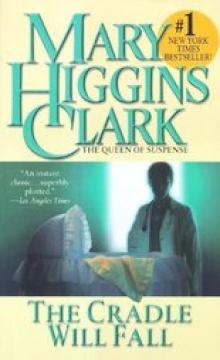 Clark, Mary Higgins 03 - The Cradle Will Fall
Clark, Mary Higgins 03 - The Cradle Will Fall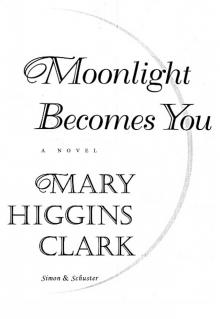 Moonlight Becomes You
Moonlight Becomes You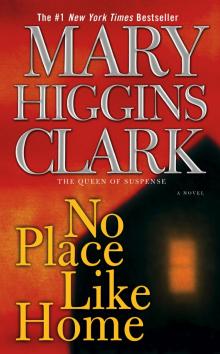 No Place Like Home
No Place Like Home I've Got My Eyes on You
I've Got My Eyes on You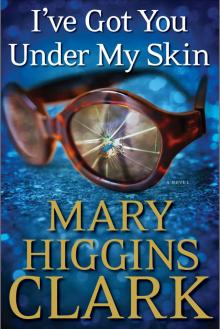 I've Got You Under My Skin
I've Got You Under My Skin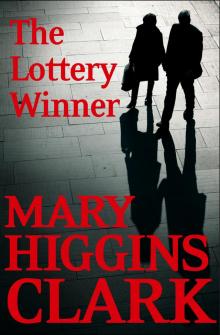 The Lottery Winner
The Lottery Winner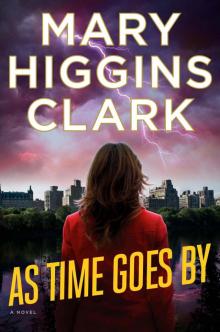 As Time Goes By
As Time Goes By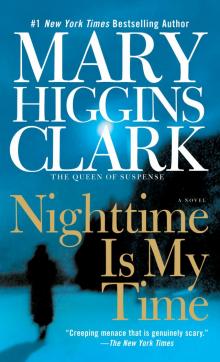 Nighttime Is My Time
Nighttime Is My Time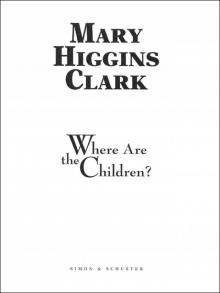 Where Are the Children?
Where Are the Children?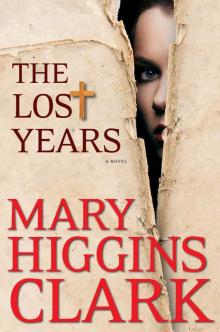 The Lost Years
The Lost Years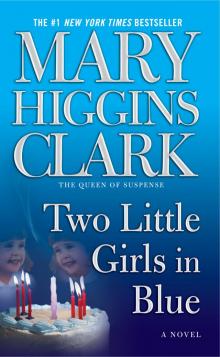 Two Little Girls in Blue
Two Little Girls in Blue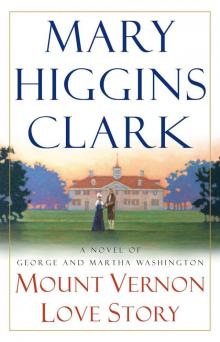 Mount Vernon Love Story: A Novel of George and Martha Washington
Mount Vernon Love Story: A Novel of George and Martha Washington All by Myself, Alone
All by Myself, Alone The Melody Lingers On
The Melody Lingers On Just Take My Heart
Just Take My Heart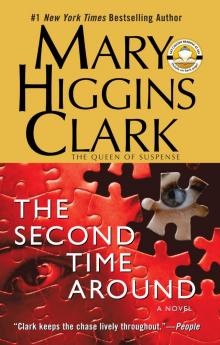 The Second Time Around
The Second Time Around A Cry in the Night
A Cry in the Night Deck the Halls
Deck the Halls We'll Meet Again
We'll Meet Again Before I Say Goodbye
Before I Say Goodbye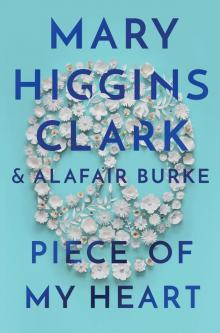 Piece of My Heart
Piece of My Heart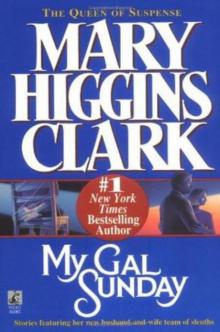 My Gal Sunday
My Gal Sunday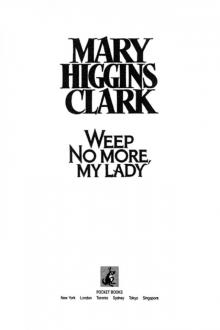 Weep No More, My Lady
Weep No More, My Lady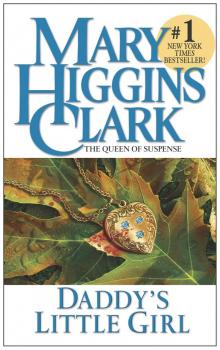 Daddy's Little Girl
Daddy's Little Girl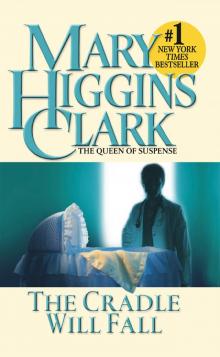 The Cradle Will Fall
The Cradle Will Fall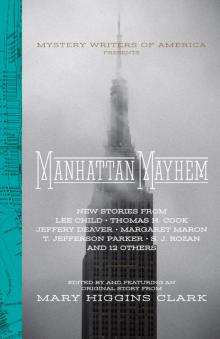 Manhattan Mayhem: New Crime Stories From Mystery Writers of America
Manhattan Mayhem: New Crime Stories From Mystery Writers of America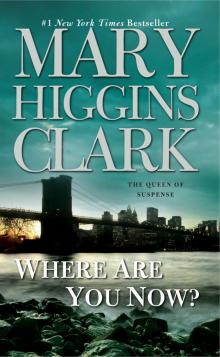 Where Are You Now?
Where Are You Now?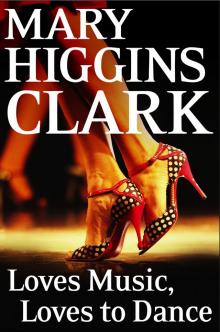 Loves Music, Loves to Dance
Loves Music, Loves to Dance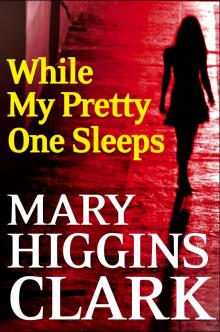 While My Pretty One Sleeps
While My Pretty One Sleeps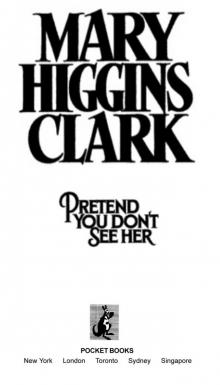 Pretend You Don't See Her
Pretend You Don't See Her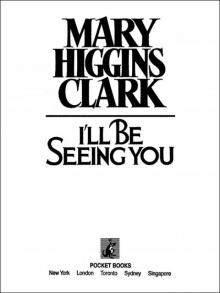 I'll Be Seeing You
I'll Be Seeing You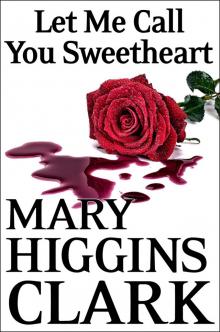 Let Me Call You Sweetheart
Let Me Call You Sweetheart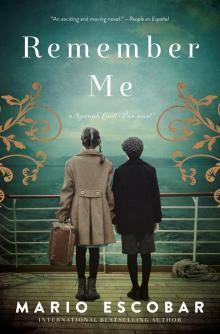 Remember Me
Remember Me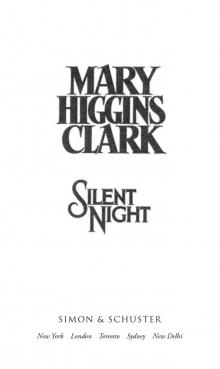 Silent Night
Silent Night Kitchen Privileges
Kitchen Privileges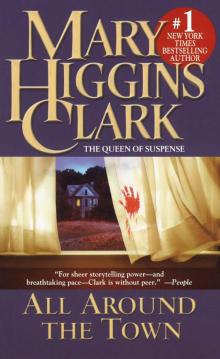 All Around the Town
All Around the Town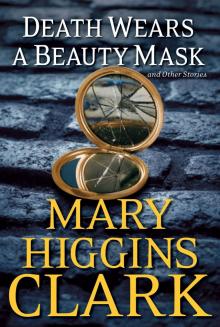 Death Wears a Beauty Mask and Other Stories
Death Wears a Beauty Mask and Other Stories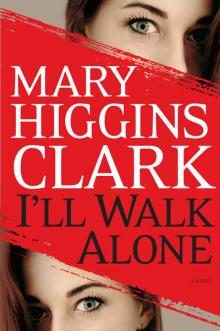 I'll Walk Alone
I'll Walk Alone The Shadow of Your Smile
The Shadow of Your Smile Kiss the Girls and Make Them Cry
Kiss the Girls and Make Them Cry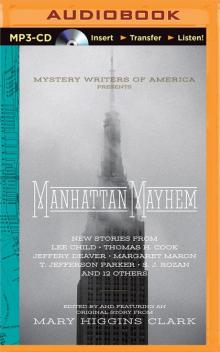 Manhattan Mayhem
Manhattan Mayhem Deck the Halls (Holiday Classics)
Deck the Halls (Holiday Classics)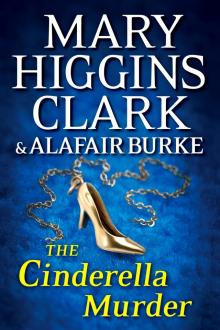 The Cinderella Murder
The Cinderella Murder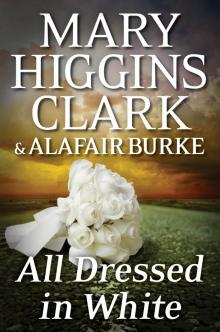 All Dressed in White
All Dressed in White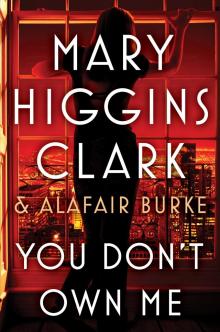 You Don't Own Me
You Don't Own Me The Christmas Thief
The Christmas Thief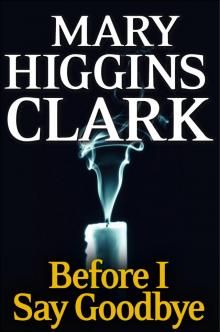 Before I Say Good-Bye
Before I Say Good-Bye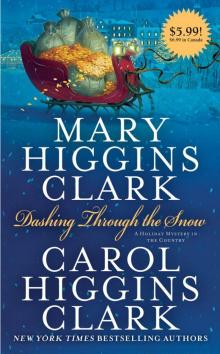 Dashing Through the Snow
Dashing Through the Snow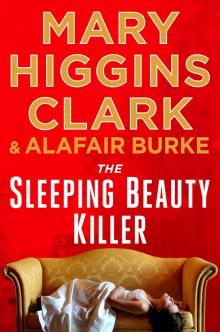 The Sleeping Beauty Killer
The Sleeping Beauty Killer Mount Vernon Love Story
Mount Vernon Love Story Santa Cruise
Santa Cruise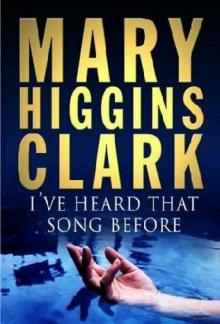 I 've Heard That Song Before
I 've Heard That Song Before